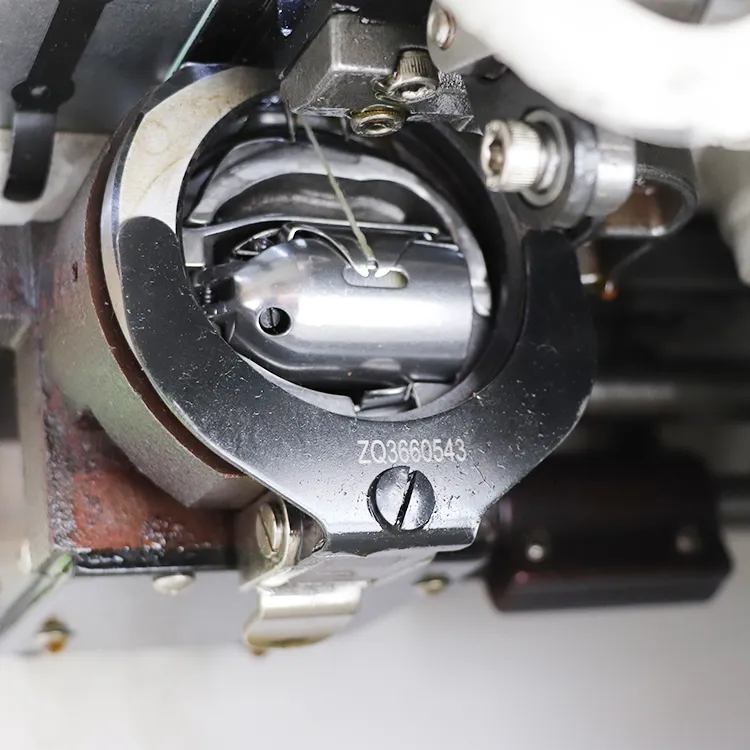Understanding the Purpose and Benefits of an Overlocker in Sewing Projects
What is an Overlocker?
An overlocker, also known as a serger in the United States, is a specialized sewing machine designed to create professional-looking seams, hems, and finishes. It is a powerful tool in the world of sewing, especially favored by fashion designers, tailors, and anyone who seeks to produce high-quality garments or fabric projects. Overlockers differ significantly from traditional sewing machines in their functionality, and understanding their capabilities can greatly enhance your sewing experience.
How Does an Overlocker Work?
An overlocker operates by simultaneously sewing and trimming the fabric edges, typically using multiple threads. While conventional sewing machines generally use one or two threads to create seams, overlockers can incorporate three to five threads, allowing for a wider range of stitch options and more secure finishes. The machine's unique mechanism features a blade that cuts off the excess fabric, resulting in a clean and professional edge.
The most common stitches created by an overlocker include the 3-thread overlock, 4-thread overlock, and rolled hem. Each of these stitches serves different purposes, such as finishing seams, creating decorative edges, or adding stretch to knits. The versatility in stitches allows sewists to achieve a variety of looks and functionalities depending on their project requirements.
Benefits of Using an Overlocker
1. Professional Finishes The primary advantage of using an overlocker is the polished appearance it provides to seams and hems. The finished edges minimize fraying and create a neat look that is often associated with ready-to-wear clothing.
2. Speed Overlockers are designed to sew quickly, which can significantly reduce project completion times, especially when working on multiple seams or constructing garments that require extensive finishing. This speed makes them an essential tool for those who sew frequently or run small clothing businesses.
what is an overlocker for

3. Stretch and Flexibility An overlocker is ideal for sewing knit fabrics, as its stitch designs maintain the fabric's stretchy qualities. Traditional sewing machines can often lead to popped seams or puckering when sewing elastic materials, whereas overlockers create stitches that allow for movement and flexibility.
4. Versatility With various configurations and attachments, many overlockers can also perform additional tasks, including cover stitching and decorative stitching. This versatility makes them suitable for a wide range of projects, from simple alterations to complex garment construction.
Choosing an Overlocker
When looking for an overlocker, several factors should be considered. First, assess your sewing needs and the types of projects you plan to undertake. Beginners may benefit from user-friendly models that offer basic functions, while more advanced sewists might prefer machines with additional features and more thread options.
Another important aspect is budget. Overlockers come in various price ranges, from entry-level models to high-end machines designed for professional use. It's essential to find a balance between your budget and the features that will enhance your sewing experience.
Lastly, consider the machine's size and portability. If you have limited space or plan to transport your machine for classes or workshops, a smaller, lighter model might be beneficial.
Conclusion
In summary, an overlocker is a valuable asset for anyone serious about sewing. Its ability to create professional finishes quickly and efficiently distinguishes it from traditional sewing machines. Whether you are a hobbyist or a professional, investing in an overlocker can elevate your sewing projects and allow you to explore new creative possibilities. When armed with this powerful tool, you can achieve beautifully finished fabrics that not only look good but also stand the test of time.
-
Boost Production Efficiency with a Pattern Sewing MachineNewsAug.29,2025
-
Industrial Excellence with the Best Heavy Duty Sewing MachineNewsAug.29,2025
-
Precision and Power with the Best Pattern Sewing MachineNewsAug.29,2025
-
Reliable Bulk Packaging Starts With the Right FIBC Sewing MachineNewsAug.29,2025
-
Advanced Packaging Solutions: Elevate Productivity with Jumbo Bag Sewing Machine and Industrial Stitching EquipmentNewsAug.29,2025
-
High-Performance Solutions for Bulk Packaging: FIBC Sewing Machine and MoreNewsAug.29,2025
-
Maximize Efficiency with an Industrial Cylinder Arm Sewing MachineNewsAug.28,2025


























